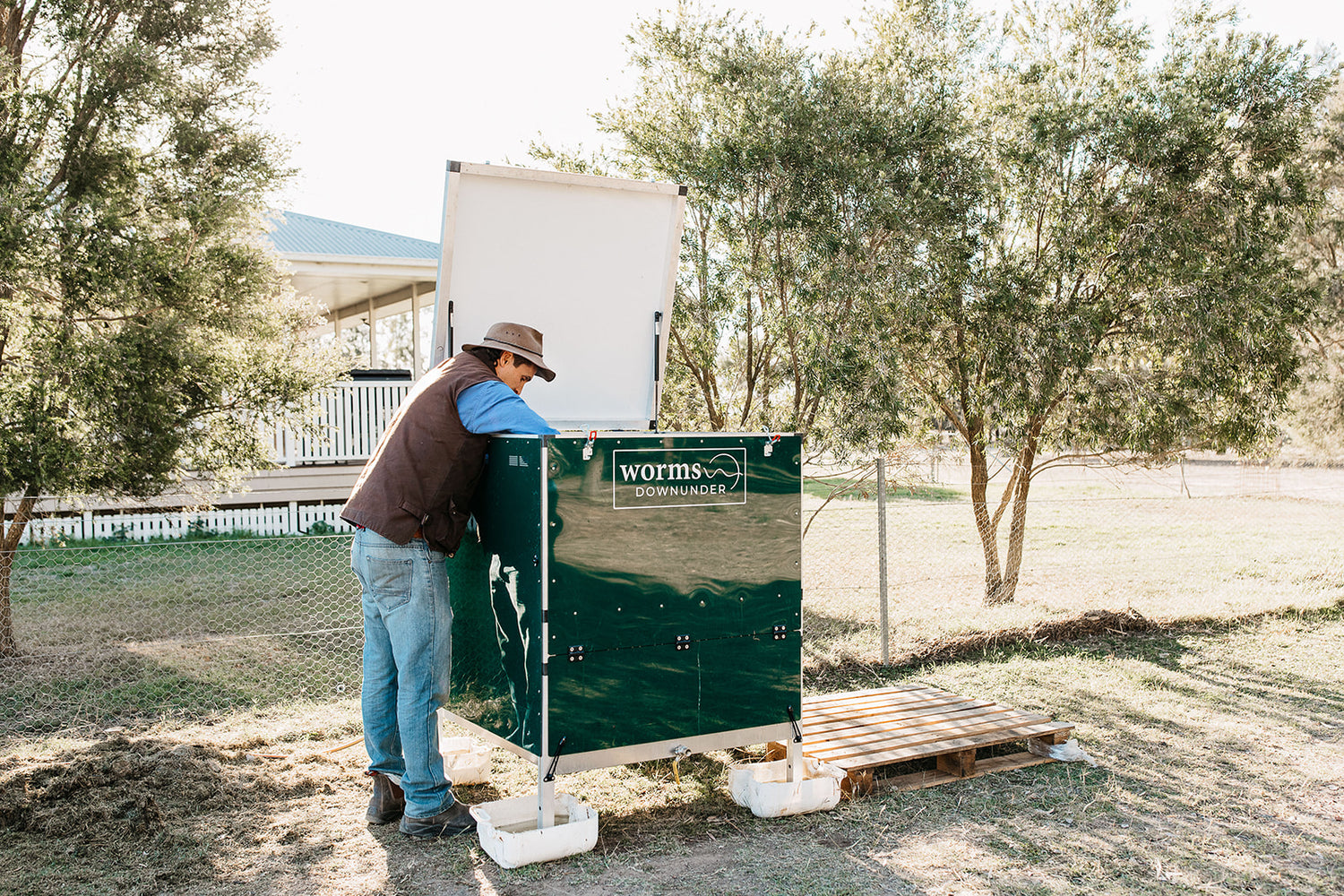
Flat-Pack Assembly Instructions
Follow our guide to assemble your Flat-Packed Worm Mod! Including frame assembly, leachate tank, scraper system, and final adjustments for best results.
You’ll soon discover that worms aren’t the only living organisms in your worm farm. They likely hitched a ride on the organic materials you’ve fed the worms. Most other organisms will not harm your worms, so don’t be too concerned with trying to control their populations. These decomposers are part of the soil food web and will actually improve the productivity of your worm farm. Other critters are generally only an issue if the population starts to become excessive and overtake the worm population.
Springtails or white mites are quite common visitors within worm farms and don’t usually pose a threat to the ecosystem. The worms and the springtails have a symbiotic relationship that can be part of a healthy worm farm. However, if you find the population of white mites increasing, this may indicate an increase in moisture or acidity levels. Ensure your farm is not too wet and that acidity levels are balanced by increasing carbon input and dolomite.
A less welcome visitor, remove snails and slugs by hand where possible. It may be possible to bait these critters by placing the bait on a container – above the surface of the bedding and scraps and away from the worms – and then dispose of them. If you notice that the population continues to increase after the removal of baited snails, this may be due to the remaining snail eggs which have contaminated the bedding. If the problem continues, you may need to restart your farm, and luckily it’s possible to harvest your worms before restarting your farm without losing the current population.
Maggots or soldier flies don’t pose a threat to the worms but are generally a sign of not enough carbon and too much nitrogen (food scraps) creating high moisture and acidity levels – an environment where maggots or soldier flies thrive. It can also be a sign of too much feed for the number of worms present, meaning the food is starting to decompose before the worms get a chance to process it (particularly animal products i.e. meat or dairy) which can invite unwanted pests if left uncovered or unprocessed. This can usually be resolved by stopping the nitrogen input for a week or so and giving the farm a significant carbon boost – newspaper, shredded cardboard, aged manure, mulch etc, and a sprinkle of dolomite. This will help to balance out the nitrogen, acidity levels and excess moisture.
Aerating your farm is also important as it may have become a bit anaerobic with too much high-water content waste (e.g. food scraps). Gently dig around to increase oxygen levels back into your farm - we use a pitch fork. To reduce the chance of the maggots making a reappearance, reducing your waste input or upping your worm numbers will help.
Spiders like dry conditions which may indicate your farm is too dry. Watch our ‘How To Do The Squeeze Test’ video to assess the moisture levels of your farm.
Misting the farm with water regularly for a small period may deter the spiders. Make sure you’re aerating your farm, as this may disrupt their environment and discourage them from breeding in the bedding.
Alternatively, it may be because the farm is attracting other bugs and critters that the spiders like to snack on. The presence of other critters is usually a sign of too much feed for the number of worms present, meaning the food is starting to decompose before the worms get a chance to process it which can invite unwanted pests. This can usually be resolved by halting the nitrogen input for a week or so and giving the farm a significant carbon boost – newspaper, shredded cardboard, aged manure, mulch etc, and a sprinkle of dolomite.
There could be a few reasons as to why the roaches have decided they can take up camp in your farm. An increase in unwanted critters often indicates an unbalanced farm. This can normally be managed by adding more carbon or less food waste. These issues can occur when too much waste is put in the farm for the number of worms, causing the food to rot/decompose naturally before the worms get a chance to process it, and the roaches love nothing more.
We suggest this can usually be resolved by stopping the nitrogen (greens) input for a week or so and giving the farm a significant carbon boost – newspaper, shredded cardboard, aged manure, mulch etc, and a sprinkle of dolomite. This should encourage the roaches to source food elsewhere.
Fruit flies are attracted to fresh and decomposing organic matter so a few tips on how to prevent are:

Ants are generally a sign that your worm farm is too dry as ants prefer dry environments and are not a fan of moisture. A simple fix if usually giving your farm and good misting and aerate.